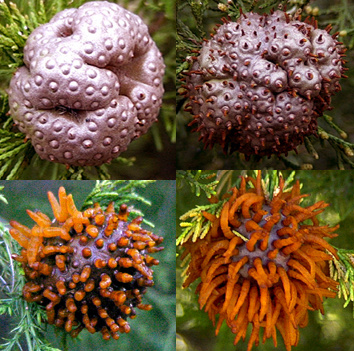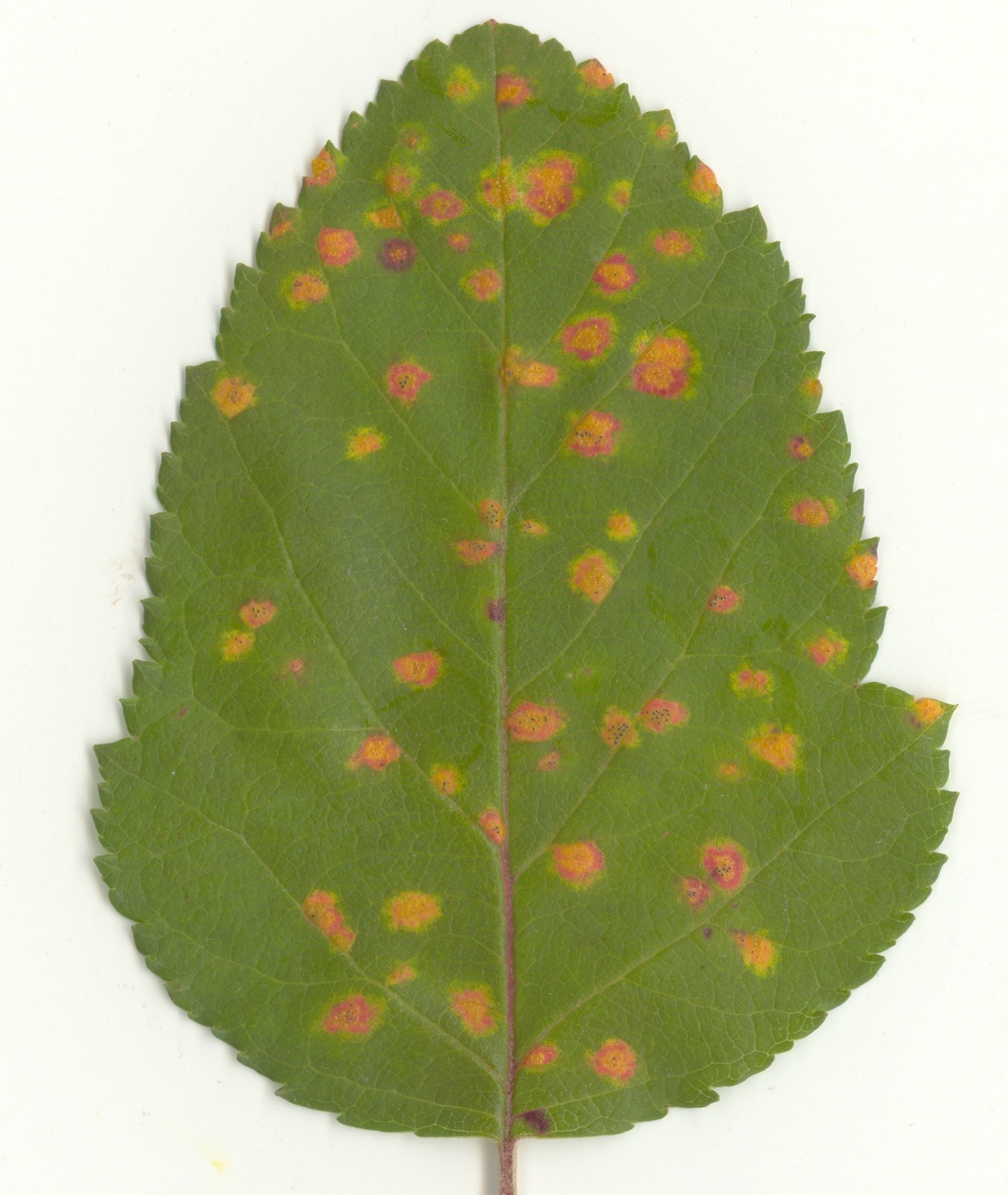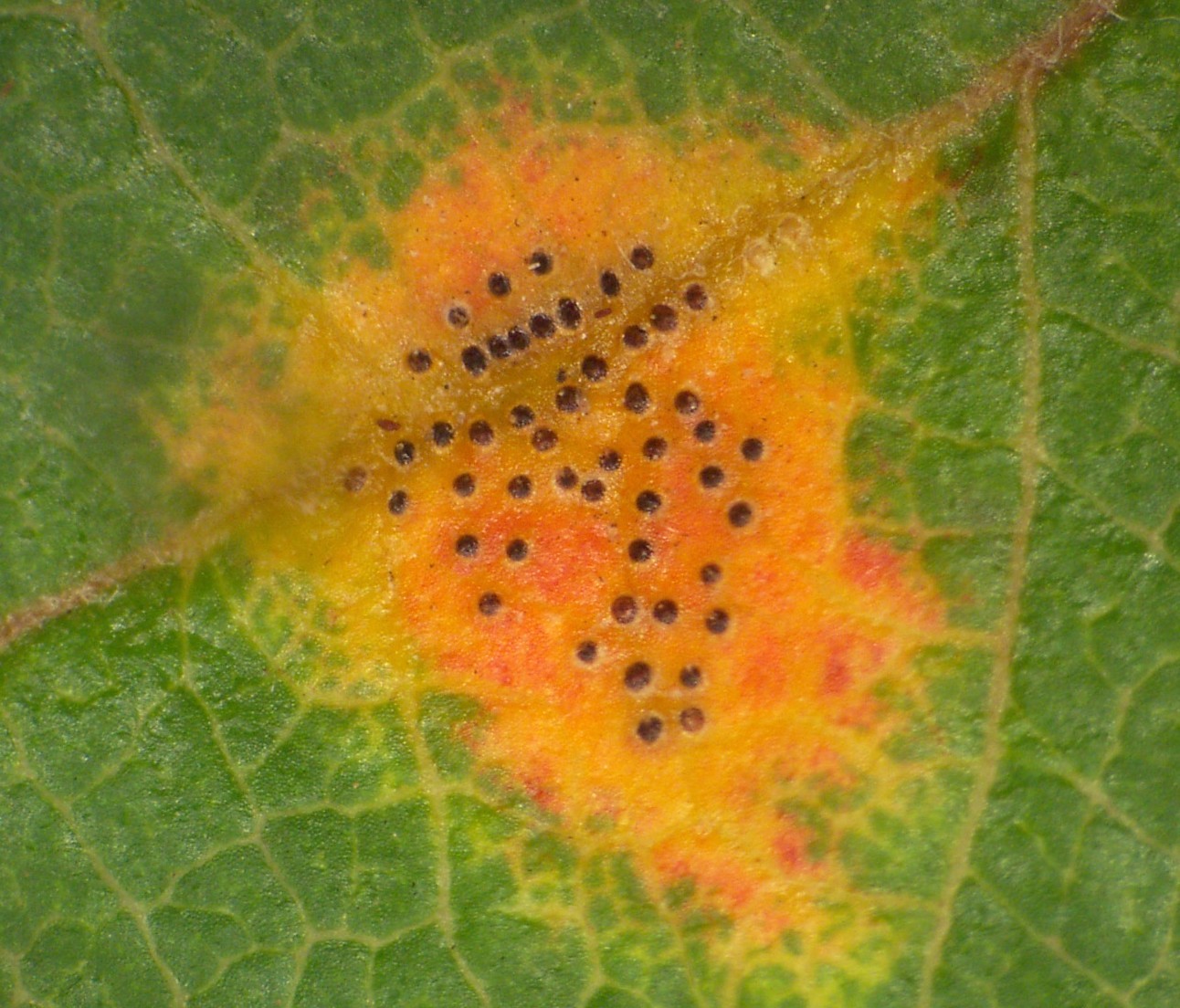Cedar Apple Rust
 Causal Agent
Causal Agent
The fungus Gymnosporangium juniperi-virginianae
Hosts
Apple, crabapple, eastern red cedar, southern red cedar, and juniper.
Symptoms
 (Apple) The disease first appears on the leaves as small greenish yellow spots which
gradually enlarge, changing to orange-yellow and becoming surrounded at the border
by concentric red bands. On the upper leaf surface, the spots become stippled with
black specialized fruiting structures (spermogonia). On the under side of the leaf,
lesions are formed called "aecia". At the point where an aecium is formed, harilike
projections can be observed. The leaf thickens around these projections, causing the
aecium to have a cuplike appearance. These cuplike lesions can also appear on immature
fruit of apples, causing dwarfing and malformation.
(Apple) The disease first appears on the leaves as small greenish yellow spots which
gradually enlarge, changing to orange-yellow and becoming surrounded at the border
by concentric red bands. On the upper leaf surface, the spots become stippled with
black specialized fruiting structures (spermogonia). On the under side of the leaf,
lesions are formed called "aecia". At the point where an aecium is formed, harilike
projections can be observed. The leaf thickens around these projections, causing the
aecium to have a cuplike appearance. These cuplike lesions can also appear on immature
fruit of apples, causing dwarfing and malformation.
Symptoms
 (Cedar) Cedar leaves are infected during summer months, and by June the following
summer, small greenish brown swellings appear on the upper or inner foliage surface.
These swellings enlarge and by autumn appear as chocolate brown, somewhat kidney-shaped
galls. Each gall is covered with small circular depressions. The somewhat kidney-shaped
galls vary from 1/16 of an inch to over 2 inches across. The next spring, in moist
weather, the pocketlike depressions in the galls put forth orange telial horns. These
telial horns are a gelatinous material that swells immensely. A gall covered with
telial horns may reach the size of a small orange.
(Cedar) Cedar leaves are infected during summer months, and by June the following
summer, small greenish brown swellings appear on the upper or inner foliage surface.
These swellings enlarge and by autumn appear as chocolate brown, somewhat kidney-shaped
galls. Each gall is covered with small circular depressions. The somewhat kidney-shaped
galls vary from 1/16 of an inch to over 2 inches across. The next spring, in moist
weather, the pocketlike depressions in the galls put forth orange telial horns. These
telial horns are a gelatinous material that swells immensely. A gall covered with
telial horns may reach the size of a small orange.
Control
Control can be achieved by removing either host from the vicinity of the other; however, In Oklahoma removal of juniper hosts is not usually possible. In most urban settings, removal of a host is not feasible. If practical, in late winter remove all cedar-apple rust galls from cedar and juniper. This practice will help break the disease cycle; however, no benefit will be received from this method if your neighbor's tree has cedar-apple rust galls. Several varieties of apple and crabapple are resistant or more tolerant to cedar-apple rust. Apple and crabapple trees can be protected from cedar-apple rust infection by following a fungicide spray schedule starting at blossom time and continuing at seven-day intervals until the cedar galls have stopped spreading spore. Fungicide control on the cedar is not recommended since the injury to cedars is not significant. Please contact your local county extension office for current information.
